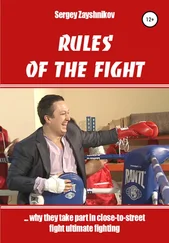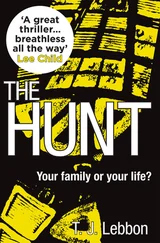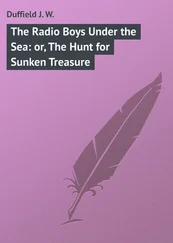Victor O'Reilly - Rules of The Hunt
Здесь есть возможность читать онлайн «Victor O'Reilly - Rules of The Hunt» весь текст электронной книги совершенно бесплатно (целиком полную версию без сокращений). В некоторых случаях можно слушать аудио, скачать через торрент в формате fb2 и присутствует краткое содержание. Жанр: Триллер, на английском языке. Описание произведения, (предисловие) а так же отзывы посетителей доступны на портале библиотеки ЛибКат.
- Название:Rules of The Hunt
- Автор:
- Жанр:
- Год:неизвестен
- ISBN:нет данных
- Рейтинг книги:4 / 5. Голосов: 1
-
Избранное:Добавить в избранное
- Отзывы:
-
Ваша оценка:
- 80
- 1
- 2
- 3
- 4
- 5
Rules of The Hunt: краткое содержание, описание и аннотация
Предлагаем к чтению аннотацию, описание, краткое содержание или предисловие (зависит от того, что написал сам автор книги «Rules of The Hunt»). Если вы не нашли необходимую информацию о книге — напишите в комментариях, мы постараемся отыскать её.
Rules of The Hunt — читать онлайн бесплатно полную книгу (весь текст) целиком
Ниже представлен текст книги, разбитый по страницам. Система сохранения места последней прочитанной страницы, позволяет с удобством читать онлайн бесплатно книгу «Rules of The Hunt», без необходимости каждый раз заново искать на чём Вы остановились. Поставьте закладку, и сможете в любой момент перейти на страницу, на которой закончили чтение.
Интервал:
Закладка:
The sniper's round created a small entry wound as it entered Fitzduane's body one inch above his right nipple and two inches to its left at the fourth rib space.
Continuing its path of destruction, it pierced the chest wall, smashed the front of the fourth rib, and then – now combined with bone fragments – divided the fourth intercostal artery, vein, and neurovascular bundle. Fragments of rib became embedded in the right lung and the bullet plowed through it, damaging minor pulmonary arteries and veins.
The round missed the trachea, went slightly lateral to the esophagus, missed the vagus nerve and thoracic duct, grazed the skin of the heart, went to the right of the aorta, and entered the posterior chest wall. Traveling slightly downward, it then smashed the back of the fifth rib, went to the right of the vertebrae and exited out of the upper left side of the back, producing a large exit wound.
Fitzduane made a slight noise as the shock of the bullet drove the air from his body, and folded slowly, his arms stretched toward Boots.
Lonsdale's bullet had longer to travel. It was approximately five times the mass of a modern automatic-rifle projectile and had a muzzle velocity of 2,800 feet per second. Part of the mass consisted of explosives.
The spotter saw the center of the sniper's body explode as the corpse was flung back against the hillside. He could see no sign of threat ahead of them.
He was turning when Lonsdale's second round arrived and drilled through his right arm from the side before exploding inside his torso.
Kilmara watched his friend and his young son through the FLIR.
The image of Boots and then Fitzduane getting hit and tumbling into the rushing water was replaced by the sight of Fitzduane's desperate attempts to help his child. And then he lay still.
The Ranger Colonel continued to monitor developments and to issue orders, his face immobile. The Guntrack originally tasked for the castle was the first unit that could make it to the scene, and at full cross-country speed it arrived in less than two minutes.
Three Rangers – Newman, Hannigan, and Andrews – jumped out. All Rangers were BATLS, Battlefield Advanced Trauma Life Support, trained. BATLS was a combat version of the ATLS techniques pioneered in the U.S. The reasonable assumption, given the Rangers line of work, was that they would be under fire. The emphasis was on speed.
Newman and Hannigan ran to Fitzduane. Of the two, he was clearly the more seriously wounded. Drenched in blood, he was dying before their eyes. He was bluish, very agitated, in severe respiratory distress, and in deep shock. His wounded leg looked bent and visibly shorter. It was clear the femur was shattered.
"Chest and leg," said Newman into his helmet-mounted microphone. "Lung penetrated; leg looks bad; looks like the femoral."
Andrews went to Peter. The boy's wound looked like a graze. He was mildly concussed and the back of his head was bleeding, but he was very much alive. Within a few moments, he regained consciousness. "Boy grazed but OK," said Andrews.
Fitzduane was critical, however. "Hugo," Newman said, "can you hear me?" A reply would have meant that Fitzduane was conscious and his airway clear.
There was no reply. "Shit," said Newman. Their patient was dying. Newman gave him five minutes at best. He moved to check Fitzduane's airway. Satisfied, he inserted a hollow tube, a Guidel airway, which would act to maintain access.
The whole procedure took about twenty seconds. "Airways OK," said Newman.
Hannigan had been cutting open Fitzduane's clothing and assessing the two wounds. Blood was everywhere but was cascading from the thigh wound in a positive torrent. He estimated that the man had lost up to a liter of blood in the first minute, and though the pressure had now eased off slightly as the blood supply diminished, the flow was still major. The femoral artery was like a power shower.
Fitzduane's clothes were saturated and the ground was sticky with blood. Immediately, Hannigan wrapped a bandage above the area of the thigh wound and applied pressure on it. The flow diminished, though it did not stop.
Newman suspected a tension peumothorax. The man's lung was punctured. The likelihood was that air was leaking into the chest cavity and could not escape. Pressure was building and blocking blood flow to and from the heart. In addition, the pressure in his chest kept his ribs and diaphragm expanded, so he could not breathe in and out properly. Fitzduane was gasping. He was running out of oxygen.
Working very fast, Hannigan checked Fitzduane's trachea, then percussed his chest. The first dull sound confirmed the leakage of blood into the pleural space. The second sound, a booming resonance, confirmed the excess of air.
"Fuck it," he said. "We've got a tension."
Without hesitation, he thrust a wide-bore cannula into the front of the chest. The cannula looked like a slim ballpoint-pen refill and consisted of a hollow needle protruding slightly inside a hollow plastic tube.
As the needle penetrated, he heard a massive blow-off of trapped air. Immediately, Fitzduane's breathing improved. There was still blood and air in the space, but it was no longer under tension.
The procedure had taken one minute.
Fitzduane regained partial consciousness. "C-ca… brea…," he gasped faintly. "My son, look after…"
"Be my guest," said Hannigan and put a Ventimask over Fitzduane's mouth and connected it to a cylinder of compressed oxygen. At a rate of ten to twelve liters per minute, the oxygen would last only fifteen minutes or less. Time was still critical. As Hannigan slipped on cervical and neck collars, Newman secured the Ventimask tapes. Another minute had passed.
"I'll plug," said Newman. He would try to stop the bleeding while Hannigan worked at establishing intravenous access. There was no point to inserting drips if the liquid was immediately going to leak out, and yet Fitzduane needed extra liquid fast. He was in a state of shock. His normal blood volume was five and a half to six liters, and he looked close to losing half of that.
His brain was not getting enough oxygen. He was confused, extremely weak, his heart rate was fast, his eyes glazed.
His system was closing down. He was losing the physical strength to live.
The chest wound will just have to wait, thought Newman. The thigh wound still represented the main bleeding problem. He applied direct pressure against the leg, above the area of the wound. He knew he would have to maintain the pressure for at least five minutes, probably longer.
But there was now a plug in the bath.
"You can fill him up," said Newman.
Hannigan inserted a cannula into a vein of each arm, then connected the fluid bag. The solution would make it easier for the remaining blood to circulate and keep the vital organs supplied with adequate amounts of blood, and hence oxygenated. Lack of oxygen to the brain for ore than three minutes meant that parts of it would start to die: permanent brain damage.
Establishing intravenous drip access to each side had taken less than four minutes.
Fitzduane's blood pressure began to improve from sixty to seventy systolic. It was critical. Normal was around one-twenty.
Newman was still maintaining pressure on the thigh wound.
Keeping a close eye on Fitzduane's airway to make sure that the Guidel tube was not spit out, Hannigan applied a dressing to the entry and exit wounds, taking care to stick each dressing down on three sides only, while leaving the fourth open so that air could escape. Sealing the wound totally could once again cause a buildup of internal pressure.
Newman glanced at his watch. They had been working on Fitzduane for just over eleven minutes. He was now stabilized to the best of their ability, but he remained close to death.
Читать дальшеИнтервал:
Закладка:
Похожие книги на «Rules of The Hunt»
Представляем Вашему вниманию похожие книги на «Rules of The Hunt» списком для выбора. Мы отобрали схожую по названию и смыслу литературу в надежде предоставить читателям больше вариантов отыскать новые, интересные, ещё непрочитанные произведения.
Обсуждение, отзывы о книге «Rules of The Hunt» и просто собственные мнения читателей. Оставьте ваши комментарии, напишите, что Вы думаете о произведении, его смысле или главных героях. Укажите что конкретно понравилось, а что нет, и почему Вы так считаете.
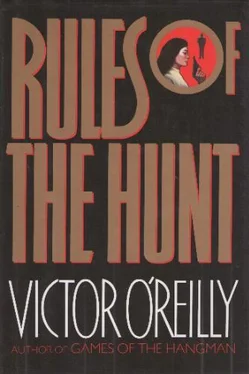
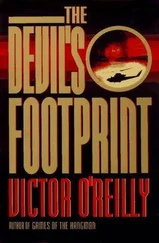


![Беар Гриллс - The Hunt [=The Devil's Sanctuary]](/books/428447/bear-grills-the-hunt-the-devil-s-sanctuary-thumb.webp)
